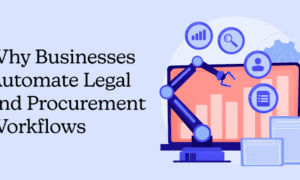Combining online and in-store sales channels is essential in today’s retail environment. WooCommerce POS (Point of Sale) systems play a key role in this integration, helping businesses manage their operations smoothly. However, with this integration comes an increased risk of security threats. To protect customer data and maintain trust, it’s vital to implement strong security measures for WooCommerce POS. Here are some essential practices for ensuring secure transactions.
Understanding WooCommerce POS Security
WooCommerce POS security protects your system from unauthorized access, data breaches, and other cyber threats. This includes securing software and hardware, training staff, and complying with legal standards. These security practices are essential for safeguarding sensitive information, including customer payment details and transaction records.
1. Keep Software Updated
Regular Updates
Regularly updating your WooCommerce POS and its plugins is crucial. Updates often come with security patches to fix weaknesses. Keeping your system up-to-date ensures you have the latest protections against potential threats. Since the WooCommerce POS plugin is developed by DevDiggers, staying in touch with their updates and news can help you promptly apply necessary changes.
Automatic Updates
Enable automatic updates to ensure your system is always running the latest version. Additionally, periodically check for updates manually to verify that all components are current.
2. Use Strong, Unique Passwords
Password Policies
Implement strong password policies that require employees to create complex passwords with a mix of letters, numbers, and special characters. Regularly changing passwords also helps to reduce the risk of compromised credentials.
Two-Factor Authentication (2FA)
Adding two-factor authentication (2FA) provides an extra layer of security. With 2FA, users must provide a second form of identification beyond their password, such as a code sent to their mobile device. This significantly reduces the chance of unauthorized entry.
3. Secure Network Connections
Encrypted Transactions
Ensure all transactions are encrypted using SSL (Secure Socket Layer) certificates. Encryption protects data as it travels between the POS system and the server, making it difficult for cybercriminals to intercept and read the information.
Secure Wi-Fi Networks
Use secure Wi-Fi networks to run your POS system. Avoid public or unsecured networks, as they are more vulnerable to attacks. Protect your business’s Wi-Fi network with a strong password and WPA3 encryption.
4. Regular Security Audits
Internal Audits
Conduct regular internal audits to assess the security of your WooCommerce POS system. Check for vulnerabilities, ensure compliance with security policies, and review access logs to identify any unusual activities.
External Audits
Consider hiring cybersecurity experts for external audits. Professional auditors can assess your system’s security unbiasedly and recommend improvements to strengthen your defenses.
5. Employee Training and Awareness

Comprehensive Training Programs
Educate your employees on the importance of POS security and best practices. Training should cover password policies, recognizing phishing attempts, and responding to security incidents.
Security Awareness
Build a security-aware culture in your organization. Regularly update employees on the latest security threats and encourage them to immediately report any suspicious activities or potential vulnerabilities.
6. Implement Role-Based Access Control (RBAC)
Limit Access
Role-based access control ensures employees access only the information and functions necessary for their job roles. This reduces the risk of internal data breaches and unauthorized changes to the POS system.
Regular Reviews
Review and update access permissions regularly to ensure they match current job responsibilities. Promptly remove access for former employees to prevent potential security risks.
7. Backup Data Regularly
Automated Backups
Implement automated backup solutions to save POS data regularly. This ensures you can quickly recover transaction records and customer information in case of a data breach or system failure.
Offsite Storage
Store backups offsite or in the cloud to protect them from physical threats like theft or natural disasters. Encrypt backup data to protect it from unauthorized access.
8. Use Reliable Hardware
Secure POS Devices
Invest in reliable and secure POS hardware. Devices should comply with industry security standards and include features like tamper detection to prevent unauthorized modifications. Additionally, integrating your POS systems with ecommerce call center services can enhance customer support and streamline operations.
Regular Maintenance
Regularly maintain and update POS hardware to ensure it functions correctly and securely. Replace outdated or vulnerable hardware components promptly.
9. Monitor Transactions and Logs
Real-Time Monitoring
Implement real-time monitoring systems to oversee transactions as they occur. Monitoring helps detect suspicious activities promptly, allowing swift action to prevent or reduce breaches.
Log Analysis
Review transaction logs and system access records regularly. Analyzing logs can reveal patterns or anomalies that indicate potential security issues. Set up alerts for unusual activities to enable a quick response.
10. Compliance with Legal Standards
PCI DSS Compliance
Ensure your WooCommerce POS system complies with the Payment Card Industry Data Security Standard (PCI DSS). PCI DSS sets requirements for securely handling credit card information, reducing the risk of data breaches.
Data Protection Regulations
Adhere to data protection regulations relevant to your location and industry, such as the General Data Protection Regulation (GDPR) for businesses operating in the EU. Compliance with legal standards helps protect customer data and avoid hefty fines.
Conclusion
Securing your WooCommerce POS system is crucial for protecting sensitive customer data and ensuring smooth, trustworthy transactions. You can significantly enhance your POS security by implementing these best practices—keeping software updated, using strong passwords, securing network connections, conducting regular audits, training employees, limiting access, backing up data, using reliable hardware, monitoring transactions, and complying with legal standards.
Effective security measures protect against potential threats and build customer confidence, contributing to long-term business success. Stay vigilant and proactive in safeguarding your WooCommerce POS system to ensure a secure shopping experience for your customers.
Do you have questions or additional tips on WooCommerce POS security? Share your thoughts in the comments below! For further information on WooCommerce POS, check out the latest updates and news from DevDiggers, the agency behind the WooCommerce POS plugin.



































